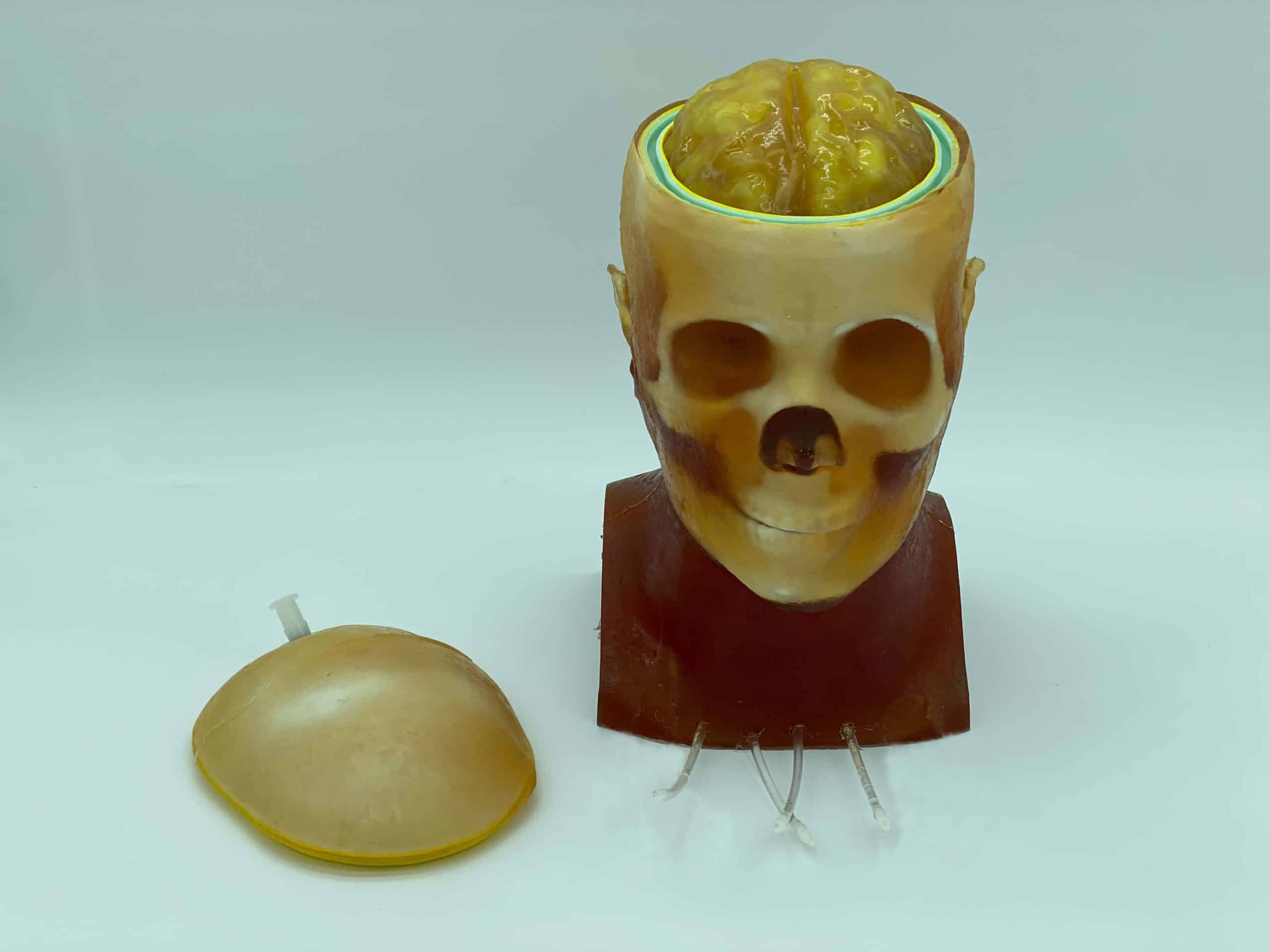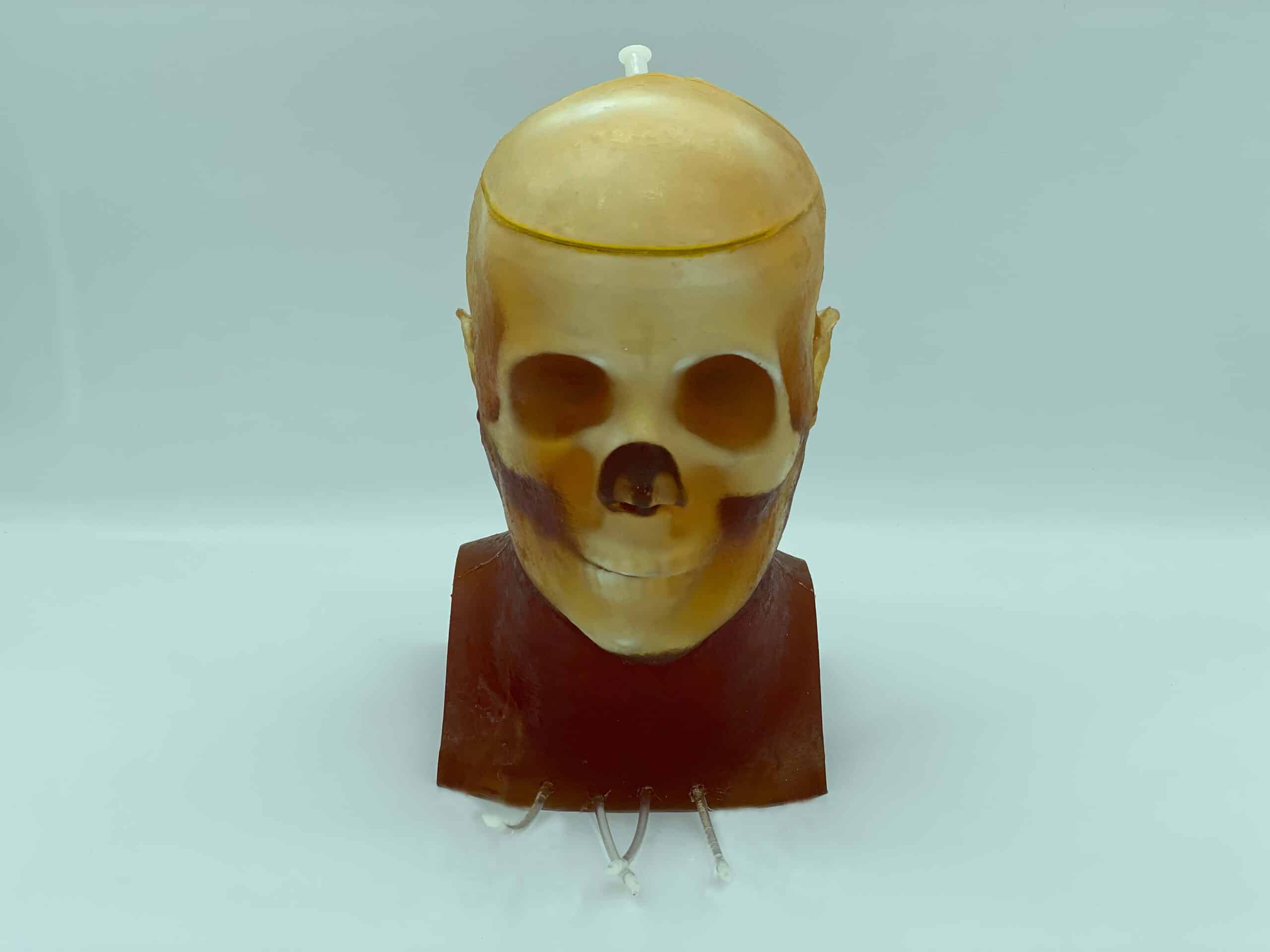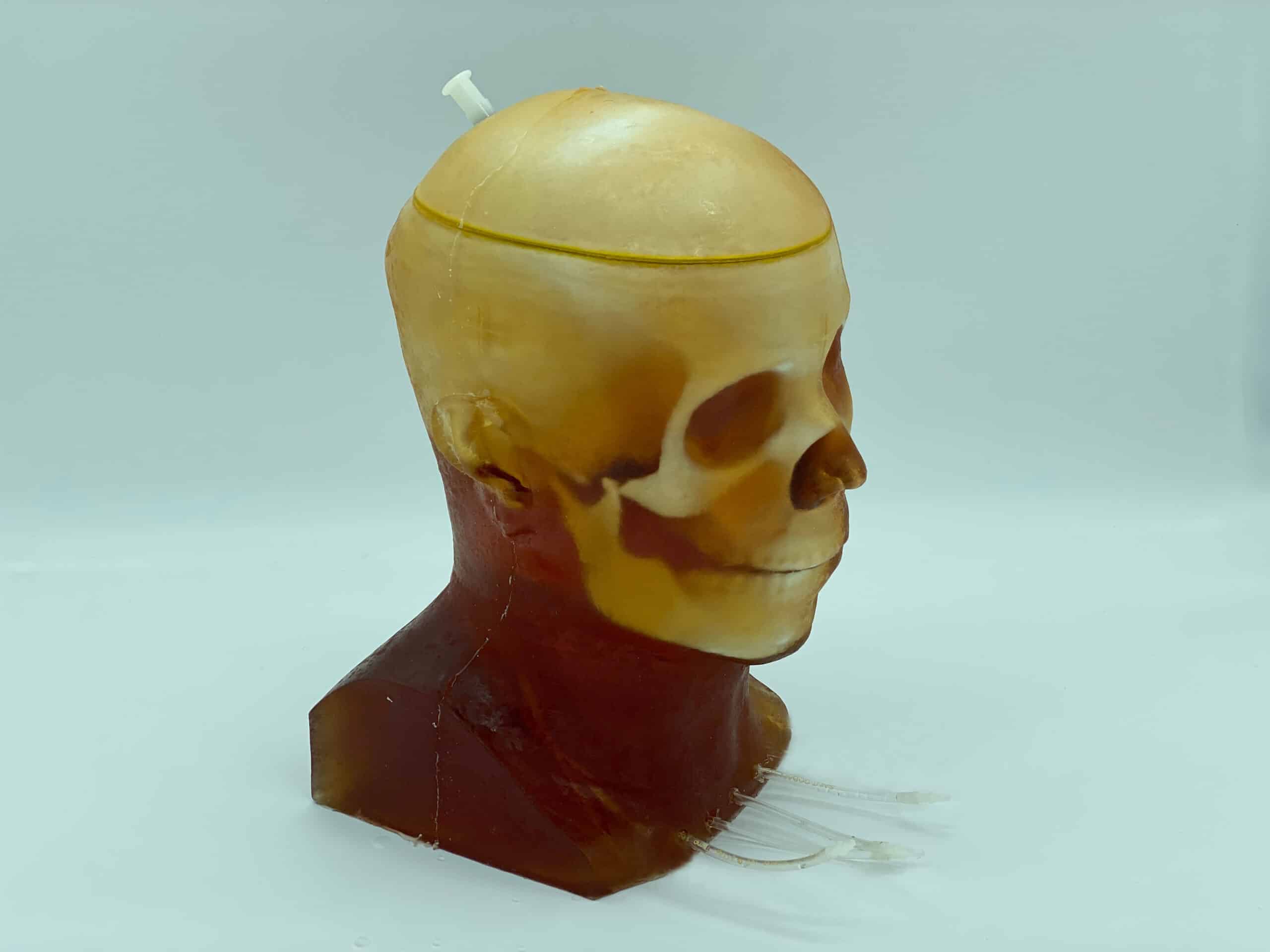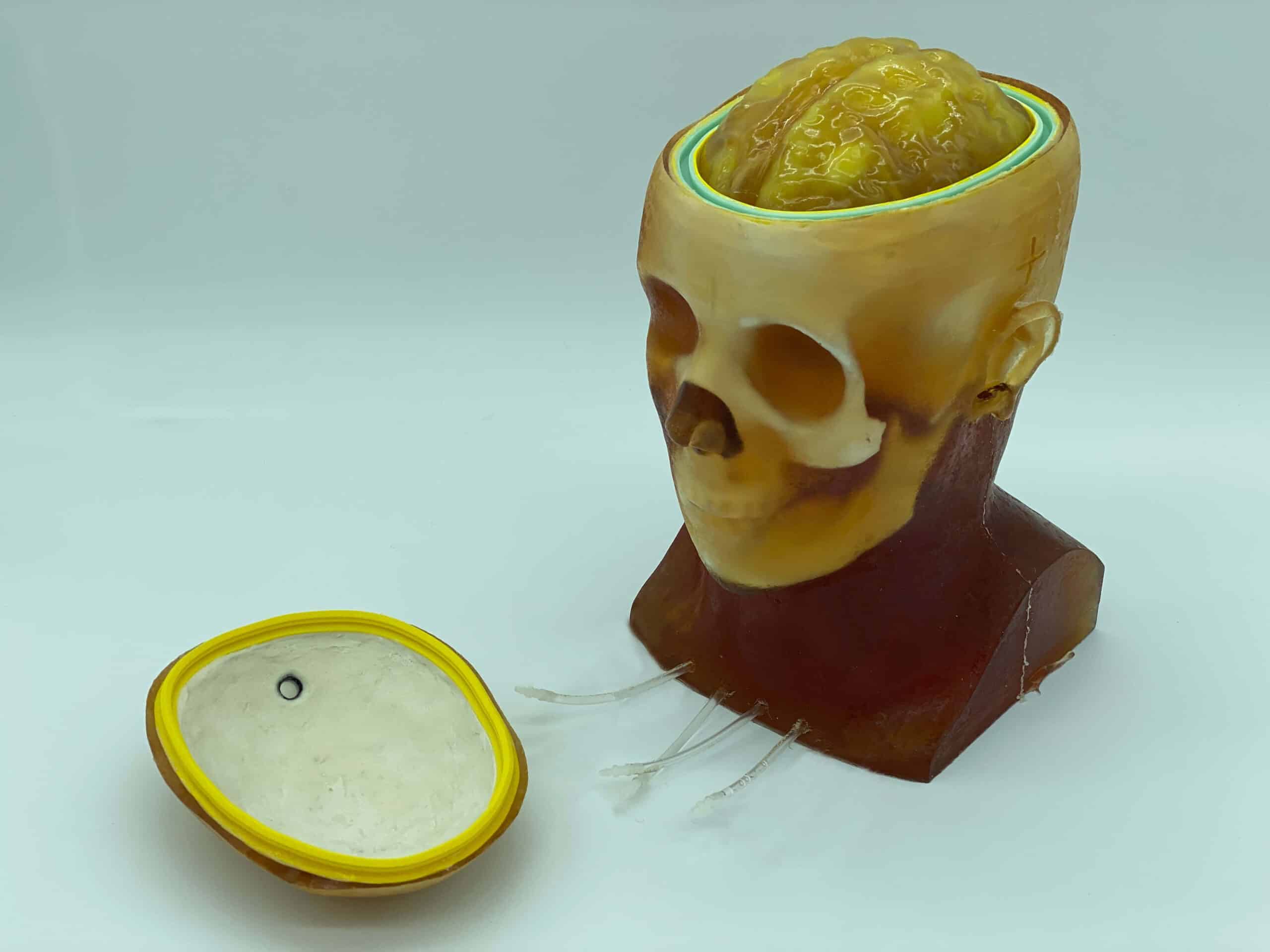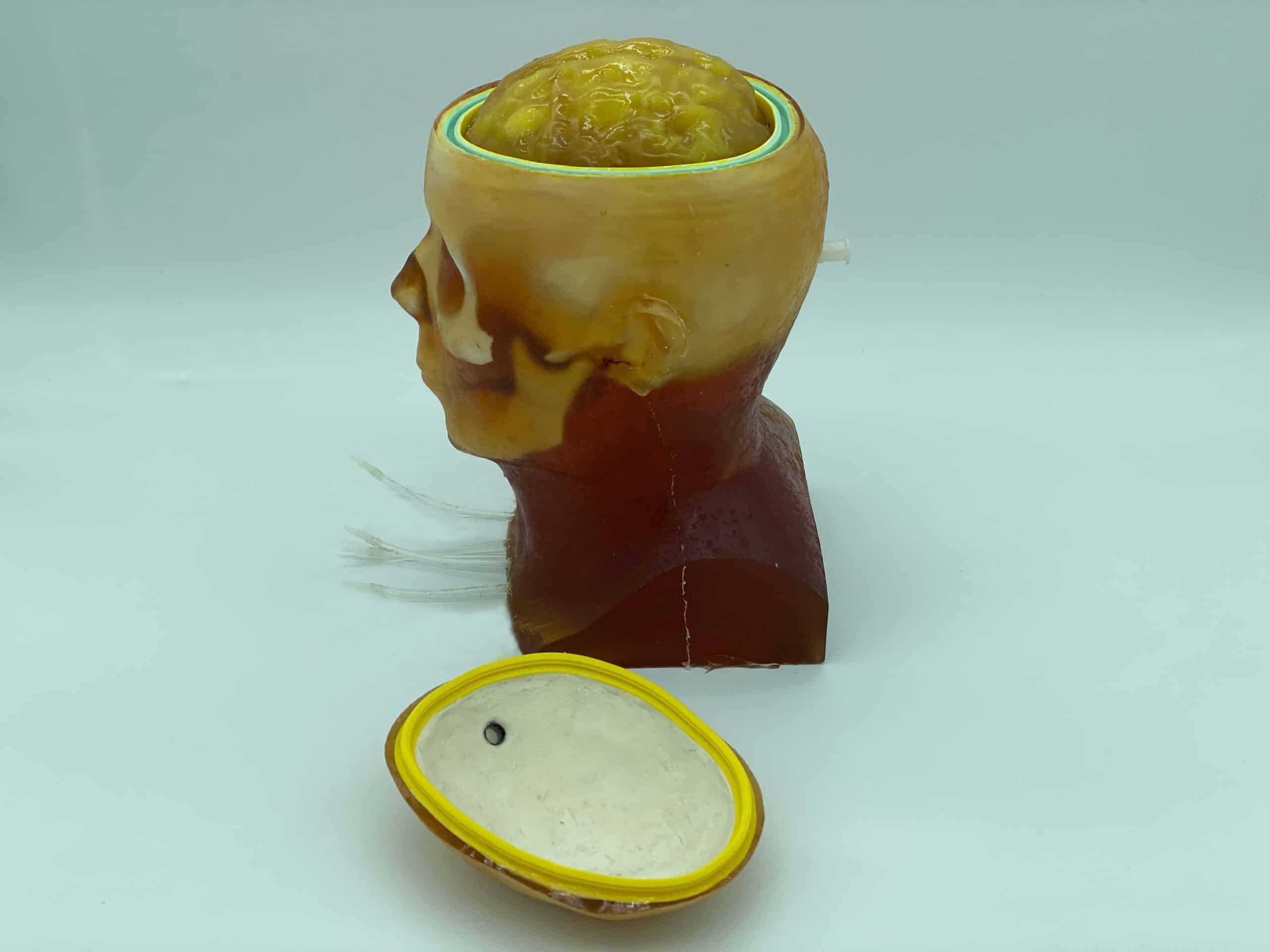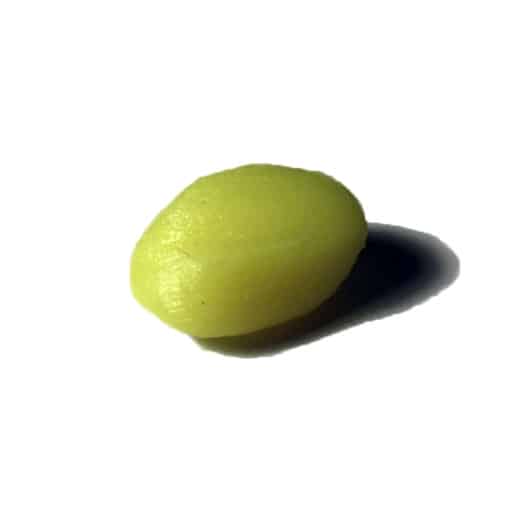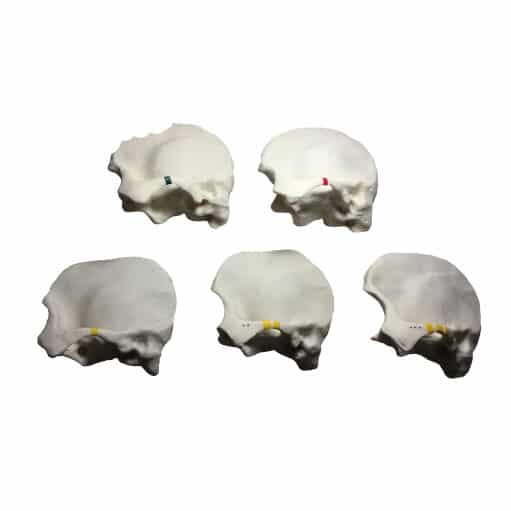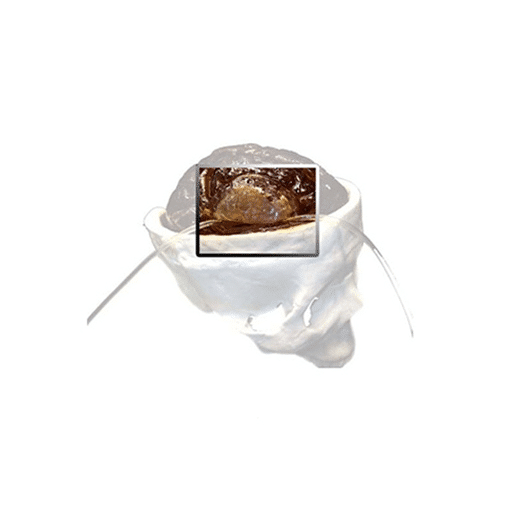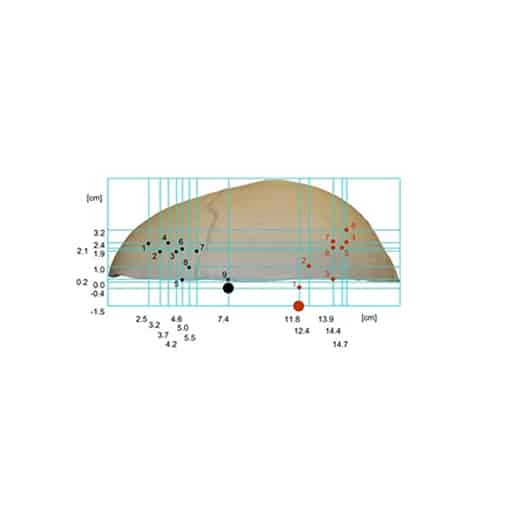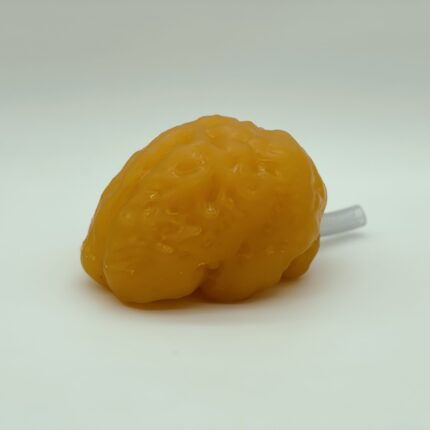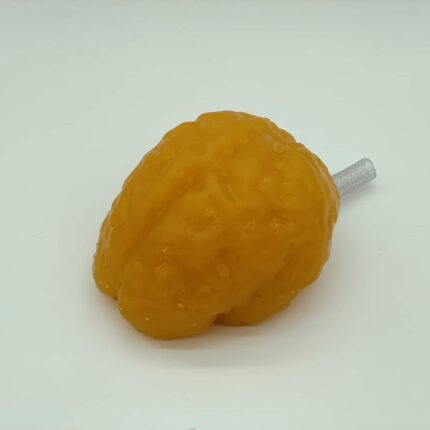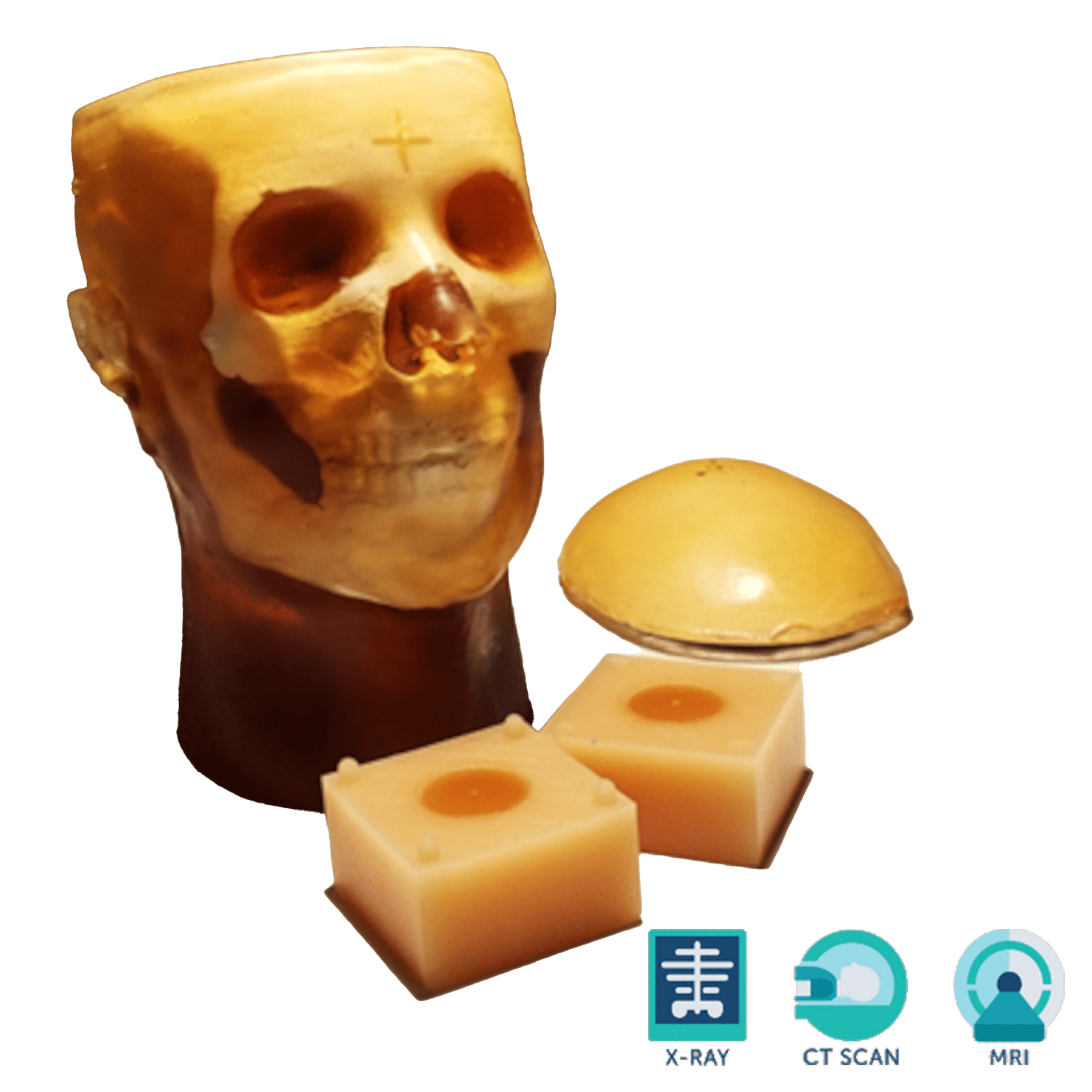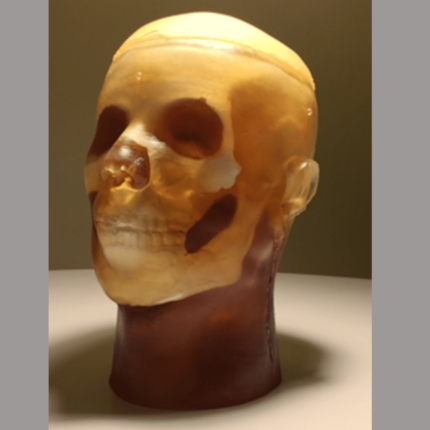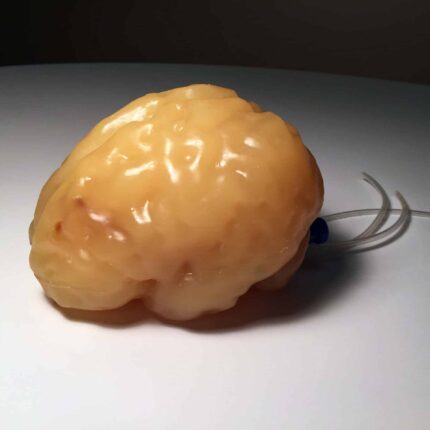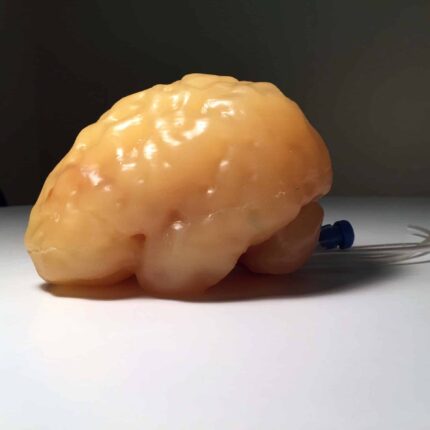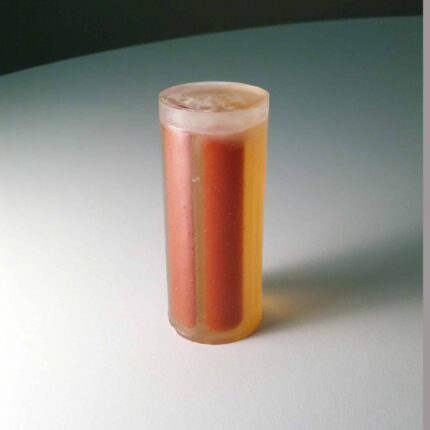The Adult Head (Dynamic, Advanced) phantom is visible on Ultrasound, MRI, and X-Ray/CT scans. The phantom can also be used for specific applications such as angiography. The brain parenchyma is made of an ultra-soft polyurethane-based material that mimics soft tissue, and its anatomical shape was created based on the MRI scan of a human brain. The materials used to build the phantom are stable over time, and they do not dry out. The skull bone has a realistic three-layered structure with an inner diploe layer. This phantom can be used with Barium-sulfate, Iodine-based, Gadolinium-based, Microbubble, and Iron Oxide-based contrast mediums.
In terms of MRI applications, the phantom tissues have realistic T2 relaxation time values, which makes this product to be the best fit for any T2-weighted MRI imaging methods. Very good results can also be achieved with Proton Density imaging methods. The phantom can be still imaged with T1-weighted methods, but the T1 values are less realistic, and they are within the range of about 100 ms.
The phantom comprises realistic blood vessels which can be filled with any commonly used blood-mimicking fluid with or without a contrast agent. It also comprises the entire ventricular system (lateral, third, and fourth ventricles), which can be used to generate pressure inside the brain and more closely approximate real cerebral anatomy. The ventricles are inflatable and can be filled with any liquid.
Prior to imaging the phantom, please fill the ventricles completely with water (or chosen contrast agent) using the tube on the back of the brain. After the ventricles are filled, plug the tube with a removable blue silicone plug.
- Skull with Temporal and Suboccipital Windows for Transcranial Doppler Ultrasound
- Openable and Removable Calvaria
- Brain Phantom
- Complex Brain Vessels (2mm, 3mm, 4mm) incorporated Circle of Willis
- One Bifurcation
- One Stenosis
- Two Aneurysms
- Connecting Vessels with Neck
- Plastic Connectors
- Brain Ventricles
- Acoustically Correct Skin Mimicking Material
To scan the head under ultrasound, fill the skull cavity with water or your preferred liquid. You can fill the skull using a syringe or by directly pouring water from a water tap through the opening on the back. The liquid is added to act as a dura matter that would act in an actual human head, and it will work as a medium through which the ultrasound wave can pass.
You can also scan the head by submerging it completely under water (i.e., in a water tank) and removing all the air bubbles from between the skull and the brain.
Once the testing is complete, drain the water and dry before storage.
Technical Properties:
| Type of Tissue | Sound Velocity [m/s] | Density [g/cm³] | Hardness [Shore 00] | T2 [ms] | Speckles | Attenuation Measured at 2.25 MHz [dB/cm] |
| Cortical Bone | 3000 ± 30 | 2.31 | N/A | N/A | N/A | 6.4 ± 0.3 |
| Trabecular Bone | 2800 ± 50 | 2.03 | N/A | N/A | N/A | 21 ± 2 |
| Brain Matter | 1400 ± 10 | 0.99 | 20 | 70 | YES | 1.0 ± 0.2 |
| Brain White Matter | 1400 ± 10 | 1.01 | 35 | 60 | YES | 1.3 ± 0.2 |
| Skin Tissue | 1400 ± 10 | 1.02 | 60 | 50 | NO | 1.7 ± 0.2 |
| Thermal Properties of Bone-Mimicking Tissue | |||||
| Thermal Conductivity | Volumetric Specific Heat Capacity | Thermal Diffusivity | Thermal Resistivity | Specific Heat | Speed of Sound |
| 0.776 W/ m K | 1.040 MJ/ m^3 K | 0.746 mm^2/ s | 1.289 m K/ W | 0.978 J/ g Deg Celsius | 3070 m/s |
| HU Values of the Tissue Mimicking Materials | ||
| S.No. | Tissue Type | HU Value (average) |
| 1 | Brain Tissue | -25 |
| 2 | Trabecular Bone | 800 |
| 3 | Cortical Bone | 1300 |
| 4 | Skin Tissue | -25 |
View our technical properties, thermal properties of bone-mimicking tissue, and HU values of the tissue-mimicking material in the tables accessible through the button below.
Add-ons (Optional):
Adult Head (Dynamic, Advanced) Phantom
User Manual/Assembly Instructions
2-Year Warranty & Unlimited Customer Service
Hard Carry Case
Phantom:
- Size: 12 x 9 x 7 inches
- Weight: 17 lbs (approx.)
Shipment:
- Size: 23 x 14 x 10 inches
- Weight: 22 lbs (approx.)
- Soft tissue and organs: Composition of urethane-based soft resin
- Synthetic bones: Patented ceramic-reinforced epoxy-based composite material


